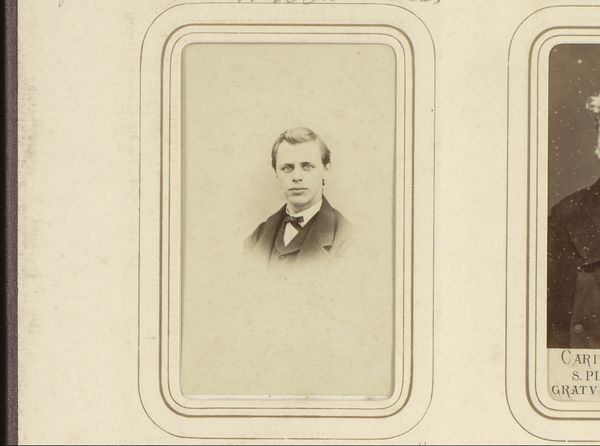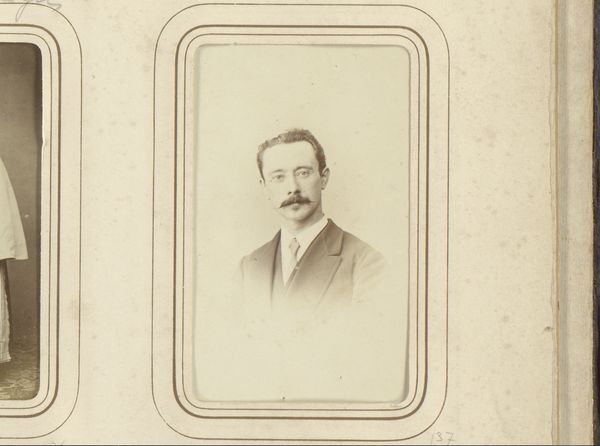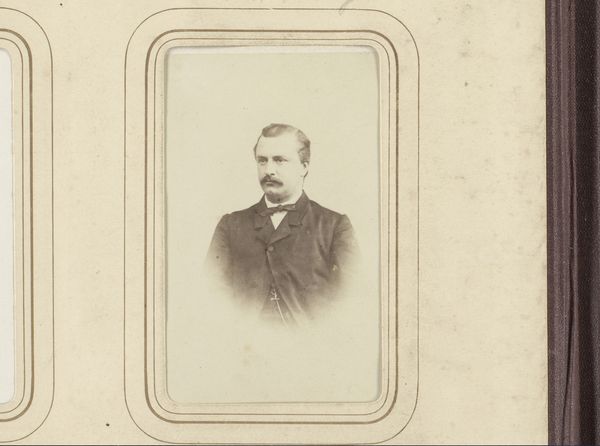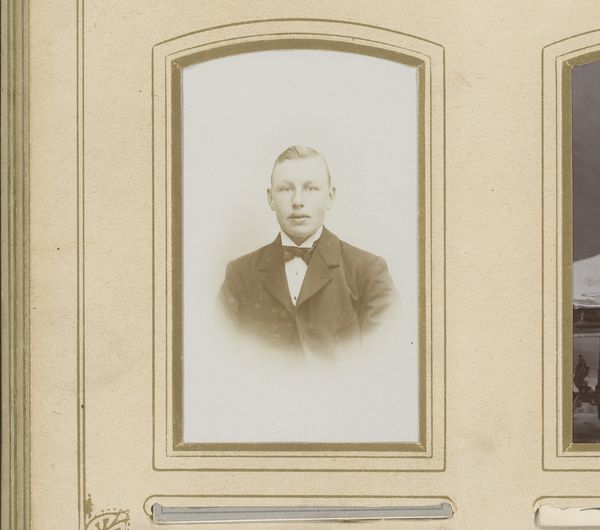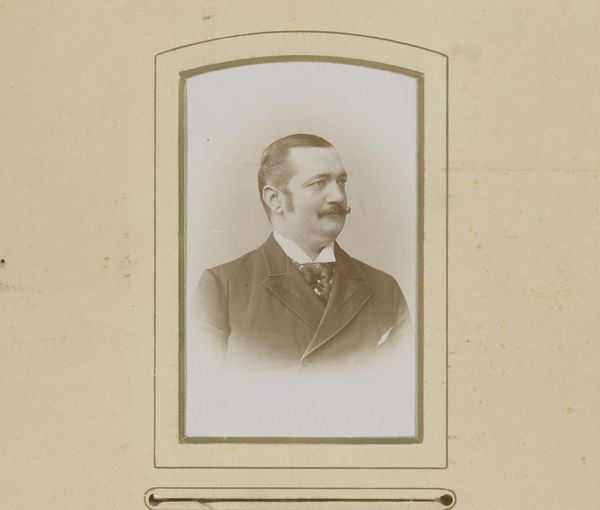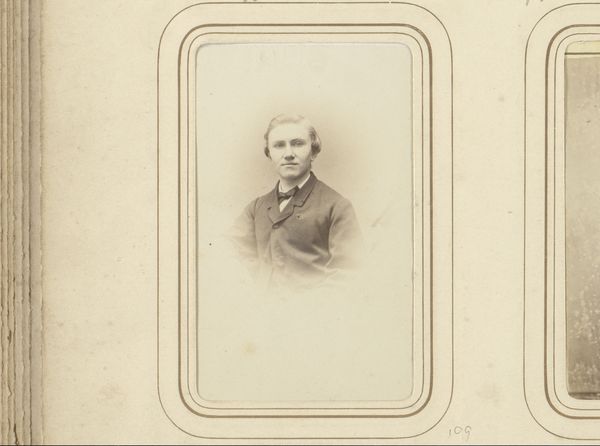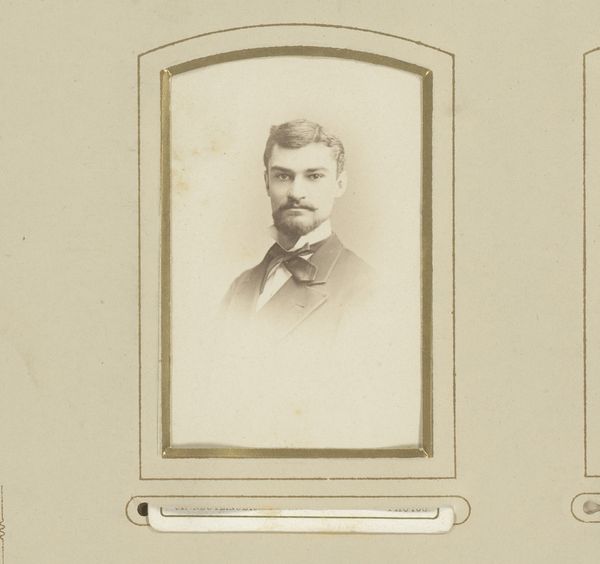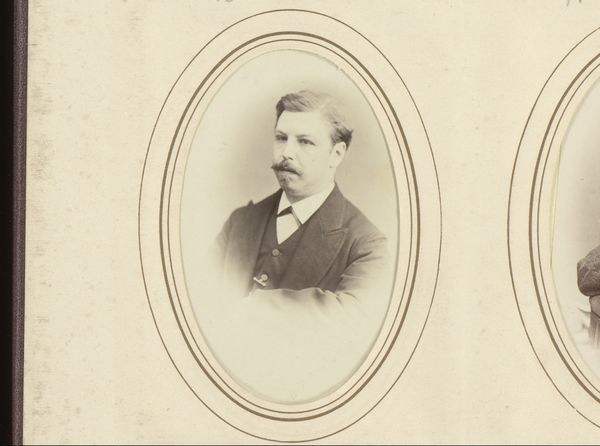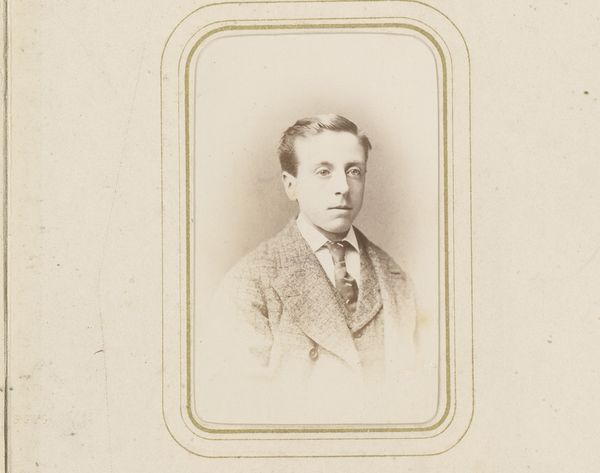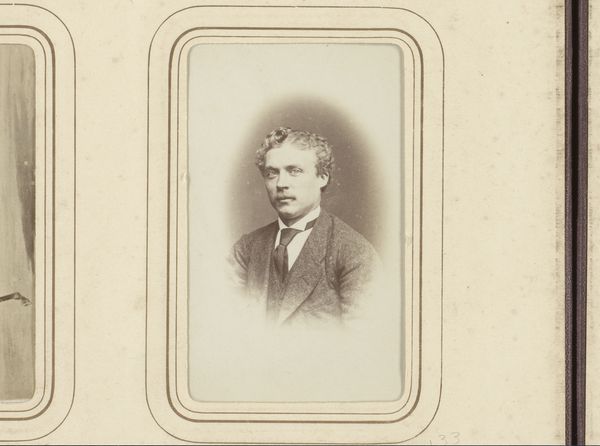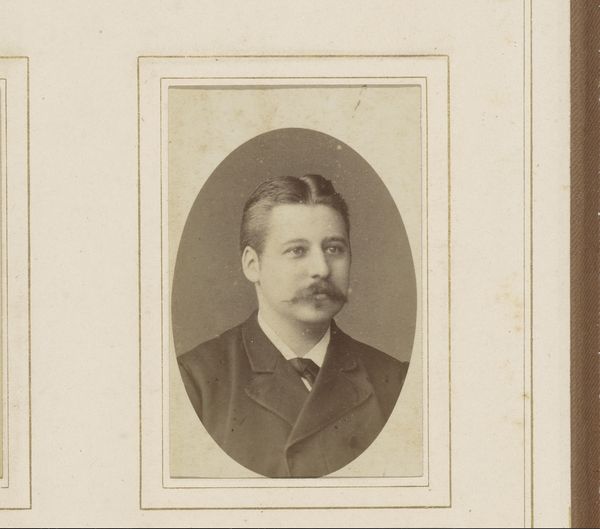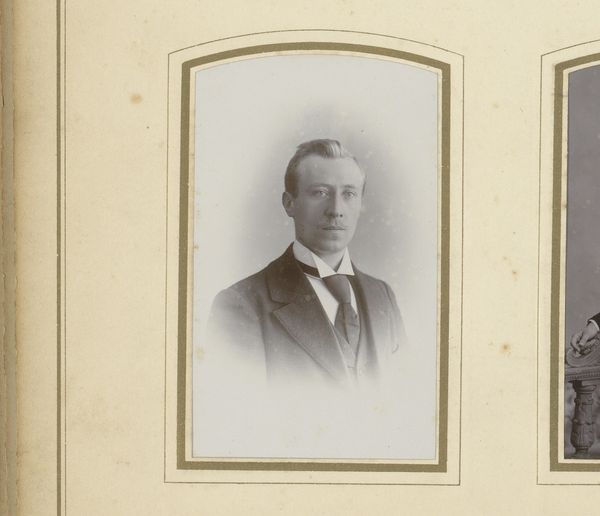
photography, gelatin-silver-print
#
portrait
#
aged paper
#
vintage
#
photo restoration
#
parchment
#
colourisation
#
archive photography
#
photography
#
historical photography
#
old-timey
#
yellow element
#
gelatin-silver-print
#
19th century
#
realism
Dimensions: height 84 mm, width 51 mm
Copyright: Rijks Museum: Open Domain
Editor: This gelatin-silver print, simply titled *Portret van een man*, comes to us from around 1865 to 1885. Something about the tight framing and the subject’s rather serious expression gives me a feeling of both formality and a bit of melancholy. What story do you think this photograph is trying to tell us? Curator: Well, it's essential to consider the rise of photography in the mid-19th century. It democratized portraiture. Before, having your portrait painted was a sign of wealth and status. Now, it was accessible to a broader segment of society. So, this photograph, likely a *carte de visite* or cabinet card, speaks to the aspirations of the burgeoning middle class. They wanted to participate in visual culture. Do you think his pose and attire are communicating something specific about the man himself? Editor: Maybe. He's not ostentatious, but he is carefully dressed. Perhaps conveying respectability or…professionalism? Were these photos intended as purely personal keepsakes, or was there a performance aspect to it? Curator: Good question. While undoubtedly serving as mementos, these photographic portraits were very much about constructing a public persona. Consider the photographer's role: posing, lighting, even retouching. This image is less a mirror and more a carefully staged representation meant for social circulation and familial memory. The spread of photography helped redefine social identities and how people presented themselves. Editor: So, it's like the Instagram of its day! Trying to put your best foot forward in a carefully constructed image for public consumption. Curator: Precisely. It underscores how the history of art and photography is tied into socio-economic shifts and how new technologies mediate and shape the human image and our understanding of identity. It's less about the man, perhaps, and more about the idea of "Man" at that time. Editor: I see what you mean. Thinking about it that way, the photograph takes on a much wider scope and reveals interesting insights on 19th century public identity. Curator: Yes, it certainly makes one consider all the elements contributing to what might seem a simple representation.
Comments
No comments
Be the first to comment and join the conversation on the ultimate creative platform.
